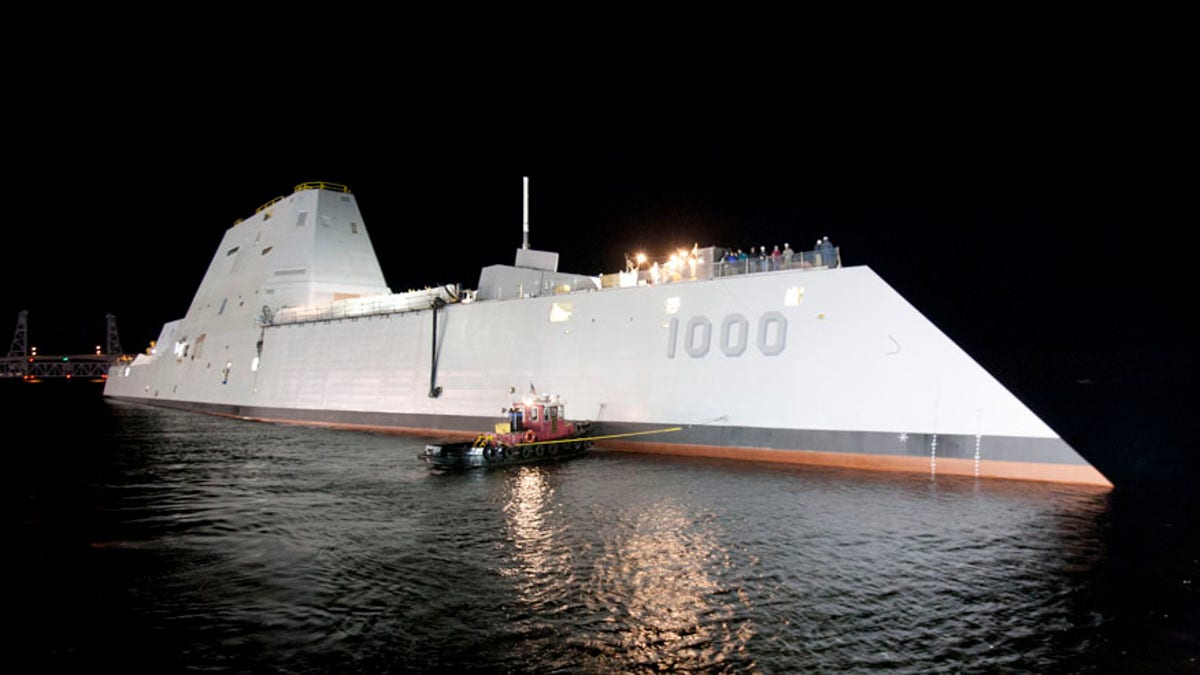
Spinel windows can have applications as electro-optical/infrared deckhouse windows in the new class of U.S. Navy destroyers, like the USS Elmo Zumwalt pictured above, that feature a low radar signature compared with current vessels. (U.S. Navy photo courtesy of General Dynamics)
In a breakthrough that could help strengthen and protect everything from tanks to spacecraft to smartphones, scientists at the Naval Research Laboratory believe they have developed a way to make glass that is 50 percent stronger than the hardest windows currently installed on military vehicles.
The harder surface could also greatly improve sensors and other equipment used by the Armed Forces.
The military hopes this new technology will provide better protection – and at a lower cost.
The armored windows currently used by the military are very strong, but they are also very hard to bend and curve. So the windshields of military vehicles tend to be two flat plates with a bar in the middle, which can hinder the driver’s view.
The preferred alternative is a windshield made from a composite of glass and ceramics. These windows are bendable, meaning there can be a single pane windshield with no bar in the center. It provides a better view, and its curved surface tends to sustain its transparency after being hit.
But these composite windows are much more expensive. In order to achieve the required hardness and strength, they are often made with costly sapphire. Last year, the Army and Marine Corps took delivery on a set of sapphire-engineered transparent armor that was used to equip 540 M142 high-mobility rocket launcher vehicles.
An alternative to sapphire is magnesium aluminum oxide, a hard, transparent mineral also known as spinel.
To make spinel harder, chemists use nanopowders of the material and heat and compress them – a process called “sintering” – into dense materials.
Now the NRL team has taken this approach to a higher level with a method it calls Enhanced High Pressure Sintering, which creates a spinel that is harder even than sapphire – and much less expensive.
The enhanced spinel is lighter and thinner, and windows made from it meet military specifications, meaning its use could reduce the weight of military vehicles.
The new material is also transparent across a number of light wavelengths. Currently, ultra violet imaging is require for threats that can’t be seen in the visible spectrum, and infrared imaging is often used to seek heat emissions.
But the NRL’s spinel can detect visible, UV and infrared, meaning a single window – instead of several – would suffice on missions.
This would mean an even greater weight reduction.
The technology could be also be used for windows on space vehicles, which require UV capability, as well as for civilian products, such as stronger smartphones and tablets.




















